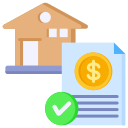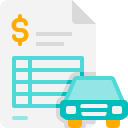Loans
Loans - Make the Right Choice
Explore personal, auto, business, and more loans with tailored options and expert guidance
- Dileep K Nair
- July 13, 2025

Personal Loan

Auto Loan

Small Business Loan

Students Loan

Home Improvement Loan

Auto Loan Refinance

Credit Card Refinance
Tools to Plan Your Loan Journey
Business Loan Calculator
Personal Loan Calculator
Auto Loan Calculator
Student Loan Calculator
Business Loan Calculator
Personal Loan Calculator
Auto Loan Calculator
Student Loan Calculator
Personal Loan Repayment Excel Template
Monthly Budget Planner
Auto Loan Repayment Excel Template
Business Loan Eligibility Calculator
Personal Loan Repayment Excel Template
Monthly Budget Planner
Auto Loan Repayment Excel Template
Business Loan Eligibility Calculator
Personal Loan Checklist
Business Startup Guide
Startup Loan Checklist
Small Business Plan
Startup Loan Checklist
Business Startup Guide
Startup Loan Checklist
Small Business Plan
Compare Loan Options at a Glance
| Loan Type | Typical APR Range | Loan Amount Range | Repayment Terms | Best For |
| Personal Loans | 6% - 36% | $1,000 - $100,000 | 1 - 7 years | Flexible needs like emergencies or travel |
| Auto Loans | 6.5% - 20% | $5,000 - $85,000 | 2 - 7 years | Buying a new or used car |
| Small Business Loans | 7% - 30% | $5,000 - $500,000 | 1 - 10 years | Starting or growing a small business |
| Student Loans | 4% - 15% | $1,000 - $100,000+ | 5 - 20 years | Paying for college or graduate school |
| Debt Consolidation Loans | 6% - 35% | $5,000 - $100,000 | 1 - 7 years | Combining multiple debts into one payment |
| Home Improvement Loans | 7% - 36% | $1,000 - $50,000 | $1,000 - $50,000 | Renovating or upgrading your home |
| Credit Card Refinance | 6% - 30% | $1,000 - $50,000 | 1 - 5 years | Paying off high-interest credit card debt |
| Auto Loan Refinance | 5.5% - 18% | $5,000 - $85,000 | 2 - 7 years | Lowering payments on an existing car loan |
Table of Contents
What Are Loans?
A loan is a financial agreement where a lender provides funds to a borrower, who agrees to repay the amount with interest over a specified period. Loans serve diverse purposes, from financing a home renovation to covering medical emergencies, and come with distinct terms that shape their affordability and suitability.
Key Loan Terms to Understand
To evaluate loans effectively, familiarize yourself with these fundamental components:
- Principal: The initial amount borrowed, which forms the basis for calculating interest.
- Interest Rate: The cost of borrowing, expressed as a percentage of the principal. Fixed rates remain constant, while variable rates fluctuate with market conditions.
- Annual Percentage Rate (APR): A broader measure of borrowing costs, including the interest rate and fees, such as origination charges. A loan with a 5% interest rate and a 2% origination fee might have an APR of 7%.
- Term: The duration over which the loan is repaid, typically ranging from one to seven years for personal loans or up to 30 years for mortgages. Shorter terms often mean higher monthly payments but lower total interest.
- Monthly Payment: The fixed or variable amount paid each month, combining principal and interest. For a $20,000 loan at 7% APR over five years, the monthly payment is approximately $396.
- Collateral: An asset, like a car or home, pledged to secure the loan. If the borrower defaults, the lender can seize the collateral. Unsecured loans, lacking collateral, often carry higher interest rates.
Understanding these terms helps you compare loan offers and assess their long-term impact on your finances.
How Do Loans Work?
Loans facilitate access to funds that borrowers repay over time, typically with interest. The process begins when a lender evaluates an applicant’s financial profile, including credit score, income, and debt obligations, to determine eligibility and terms.
Upon approval, the borrower receives the funds, often as a lump sum, and starts making scheduled payments until the loan is fully repaid.
The Mechanics of Borrowing
When you take out a loan, the lender charges interest as compensation for providing the funds. Interest accrues based on the principal, either daily, monthly, or annually, depending on the loan type.
Payments typically combine principal and interest, with early payments weighted toward interest and later payments reducing the principal. Some loans, like student loans, offer deferred payments, where interest accrues during a grace period before repayment begins.
Secured vs. Unsecured Loans
Loans fall into two categories based on collateral requirements:
- Secured Loans: Backed by an asset, such as a vehicle for an auto loan or a home for a mortgage. Secured loans often have lower interest rates due to reduced lender risk but carry the risk of asset forfeiture upon default.
- Unsecured Loans: Require no collateral, relying on the borrower’s creditworthiness. Personal loans and credit card refinancing loans are common examples. Higher interest rates reflect the increased risk to lenders.
In 2024, the average interest rate for unsecured personal loans was 11.8% for borrowers with good credit, compared to 6.5% for secured auto loans (source: Federal Reserve).
Types of Loans Available
Loans vary widely to meet diverse financial needs, from purchasing a vehicle to funding a small business. Below is an overview of common loan types, along with their purposes, features, and considerations.
Personal Loans
Personal loans are unsecured, flexible loans used for purposes like medical bills, weddings, or debt consolidation. They typically range from $1,000 to $50,000, with APRs varying based on credit scores. Borrowers with excellent credit (720+) may secure rates as low as 6%, while those with fair credit (630-689) face higher rates.
Auto Loans
Auto loans finance vehicle purchases, using the car as collateral. Terms often span two to seven years, with down payments (10-20%) reducing interest costs. In 2024, the average auto loan rate was 7.2% for new cars (source: Experian).
Student Loans
Student loans cover education expenses, including tuition and living costs. Federal loans offer fixed rates and flexible repayment plans, while private loans vary widely based on credit.
Small Business Loans
Small business loans support startup costs, equipment purchases, or expansion. Options include SBA loans, bank loans, or online lenders, with rates from 5% to 30%. Collateral or personal guarantees are often required.
Debt Consolidation Loans
Debt consolidation loans combine multiple high-interest debts, like credit card balances, into a single loan with a lower rate. For example, consolidating $15,000 in credit card debt at 20% APR into a 10% personal loan saves significant interest.
Home Improvement Loans
Home improvement loans fund renovations, such as kitchen upgrades or roof repairs. Unsecured options carry higher rates, while secured loans, like home equity loans, leverage property for lower rates (e.g., 8% in 2024).
Credit Card Refinance
Credit card refinance loans pay off high-interest credit card debt with a lower-rate personal loan. Borrowers with good credit can reduce rates from 20%+ to under 10%, easing repayment.
Auto Loan Refinance
Auto loan refinancing replaces an existing car loan with better terms, such as a lower rate or extended term.
Key Requirements for Getting a Loan
Lenders assess several factors to determine loan eligibility, focusing on your ability to repay. Understanding these requirements prepares you for a smoother application process.
Credit Score and History
Your credit score, ranging from 300 to 850, signals your reliability as a borrower. Most lenders prefer scores of 690 or higher for favorable rates, though some accept scores as low as 580. A robust credit history, showing consistent on-time payments, strengthens your application.
Income and Employment
Lenders verify steady income to ensure you can cover monthly payments. Acceptable sources include wages, self-employment earnings, alimony, or Social Security. Some lenders set minimum income thresholds, such as $25,000 annually.
Debt-to-Income Ratio (DTI)
DTI measures the portion of your monthly income allocated to debt payments. Lenders favor a DTI below 40%. For example, with a $5,000 monthly income and $1,500 in debt payments, your DTI is 30%. Borrowers with a DTI below 36% are 25% more likely to secure approval (source: LendingTree).
Required Documentation
Prepare these documents to verify your application details:
- Proof of identity (e.g., driver’s license, passport)
- Proof of address (e.g., utility bill, lease agreement)
- Proof of income (e.g., pay stubs, tax returns, W-2 forms)
- Additional income verification (e.g., alimony statements, retirement account statements)
- Social Security Number or Individual Taxpayer Identification Number
Gathering documents in advance streamlines the process and demonstrates preparedness.
How to Improve Your Chances of Loan Approval
Even with imperfect credit, strategic steps can enhance your loan approval odds and secure better terms.
Build or Improve Your Credit
Improving your credit score takes time but yields significant benefits. Consider:
- Secured Credit Cards: Require a deposit as your credit limit, helping build payment history.
- Authorized User Status: Benefit from someone else’s positive credit history.
- Timely Payments: Pay bills on time to boost your score over months.
Lower Your DTI
Reducing DTI involves paying down debt or increasing income. For instance, eliminating a $3,000 credit card balance lowers DTI for a borrower with $4,000 monthly income from 35% to 27%.
Consider a Co-Signer or Collateral
A co-signer with strong credit or a secured loan backed by an asset, like a car, can improve approval chances. However, co-signers assume repayment responsibility, and defaulting on secured loans risks asset loss.
Pre-Qualify with Lenders
Pre-qualification allows you to view estimated rates and terms without impacting your credit score. Comparing multiple lenders helps identify the best fit.
Steps to Apply for a Loan
Applying for a loan involves preparation and diligence to secure favorable terms. Follow these steps:
Check Your Credit Report
Review your credit report from AnnualCreditReport.com to identify errors, such as incorrect late payments, that may lower your score. Dispute inaccuracies promptly.
Compare Lenders
Evaluate lenders based on APRs, fees, terms, and customer reviews. Banks, credit unions, and online lenders offer varying benefits, such as member discounts or fast funding.
Gather Documentation
Compile required documents, including ID, income verification, and address proof, to expedite the application process.
Submit Your Application
Most lenders offer online applications, though some require in-person submissions. A hard credit check during formal applications may temporarily lower your score by 5-10 points.
Await Funding
Approved loans typically fund within one to seven days. The first payment is often due 30 days after disbursement.
In 2024, 85% of personal loan applications were processed online, with approvals often within 48 hours (source: Experian).
What to Consider Before Borrowing
Before committing to a loan, assess its necessity and affordability to avoid financial strain.
Is a Loan the Best Option?
Explore alternatives like 0% APR credit cards for short-term purchases or family loans with no interest. For debt consolidation, compare a personal loan’s APR to balance transfer card offers.
Can You Afford the Payments?
Use a loan calculator to estimate monthly payments. Ensure this fits your budget without compromising essentials.
Understanding Fees and Costs
Loans may include:
- Origination Fees: 1-10% of the loan amount, deducted upfront.
- Late Fees: $25-$50 per missed payment.
- Prepayment Penalties: Rare but charged for early repayment.
What to Do If Your Loan Application Is Denied
A loan denial can be discouraging, but actionable steps can improve future outcomes.
Understand the Denial Reason
Under the Equal Credit Opportunity Act, lenders must disclose denial reasons, such as low credit scores or high DTI. This clarity guides your improvement efforts.
Improve Your Financial Profile
Address weaknesses by:
- Paying down high-interest debt
- Correcting credit report errors
- Building credit history through consistent payments
Credit-building efforts may take six months to a year but significantly boost approval odds.
Explore Alternatives
Consider buy now, pay later plans for small purchases or side hustles to increase income. Saving for future expenses reduces reliance on borrowing.
Frequently Asked Questions
A loan is money you borrow from a lender, like a bank, and repay over time with interest. It’s a tool to cover big expenses, like buying a car or starting a business, when you don’t have cash upfront.
Knowing how loans work helps you pick the right one without overpaying. Check out our Loan Finder tool to match your needs with options like personal or auto loans.
Secured loans require collateral, like a car or house, which the lender can take if you don’t repay. They often have lower interest rates. Unsecured loans, like most personal loans, don’t need collateral but may have higher rates due to the risk.
For instance, auto loans are secured, while debt consolidation loans are often unsecured. Learn more about personal loans.
If your credit score is low, you can still qualify for loans, but options may have higher rates. Lenders look at your income, debt-to-income ratio, and credit history. Some personal loans or debt consolidation loans cater to bad credit borrowers.
Improving your score or adding a co-signer can help. Try our loan finder tool to see options.
A good rate depends on the loan type and your credit. For example, personal loans with good credit (700+) can have APRs as low as 6%, while auto loans might range from 5.5% to 10%. Compare rates across lenders to find the best deal. Use our comparison table to check typical APRs.
Debt consolidation combines multiple debts, like credit card balances, into one loan with a single payment. This can lower your interest rate and simplify payments.
For example, a $20,000 debt consolidation loan at 8% APR could save you money compared to 20% credit card rates. Check out our debt consolidation guide for details.
Yes, refinancing replaces an existing loan with a new one, often with a lower rate or better terms.
For instance, auto loan refinance can reduce your monthly car payment if rates have dropped or your credit improved. Use our auto loan refinance calculator to see potential savings.
Take the Next Step with Your Loan
Ready to find the perfect loan?
GlimMarket makes it easy to explore your options and make smart choices. If you’re buying a car, funding a business, or paying off debt, we’ve got tools and guides to help you every step of the way.
Try our Loan Calculator
Working Capital Loan for Small Businesses
SBA Loans
Auto Loan Checklist and Guide
Personal Loan Repayment Template Free Download
You Might Be Interested In

Mortgages
Find the best home loans to buy or refinance your dream home. Explore Mortgages

Credit Cards
Discover cards with low rates or great rewards for your needs. Compare Credit Cards

Personal Finance
Get tips to budget, save, and plan for your financial future. Learn Personal Finance

Investing
Start building wealth with stocks, ETFs, or retirement accounts. Start Investing

Banking
Choose the right accounts for savings, checking, or online banking. Discover Banking







